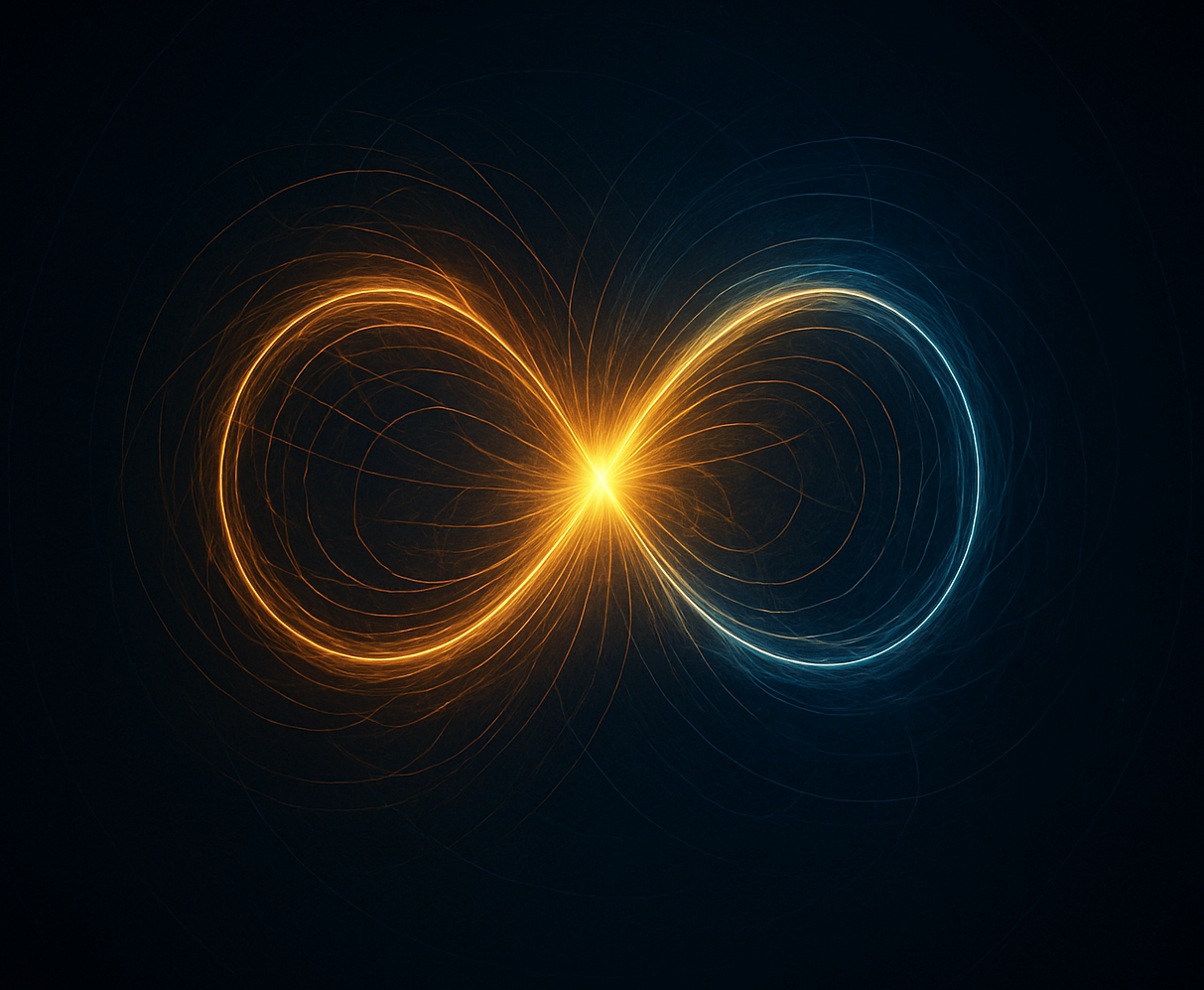Chapter 28
Gravitational Mass and Inertial Mass
There are two aspects to mass: Firstly, the fact that all objects with mass attract each other, due to what we call gravity and secondly, that any object that has mass has inertia and thus resists acceleration or a change in momentum.
We ask the question - What is the connection between gravitational mass and inertial mass? How can we account for these two intrinsic phenomena and why are they connected? Until now, nothing in science has been able to adequately explain why matter has both these properties.
Einstein’s theory of general relativity was a bold attempt, but it was not something many scientists could comprehend, let alone the average person. Like much of modern physics, it was abstract and highly mathematical. But that does not mean it was not right. It was right but it also said nothing about the real reason why matter has inertia - only that matter somehow curves space on the large scale and that this gives rise to gravity.
Why are the same? Physics has long asked.
One answer is because they both stem from the same phenomenon. That is, how mass is created and how space and matter interact as a consequence. They differ only if we are considering the interaction of multiple particles with mass (gravitational mass), or the behaviour of a single particle alone (inertial mass).
According to SED theory matter is three dimensional, and both properties come about because of the compression of space that occurs when matter is made. This process is called supersymmetry and involves the creation of a special structural entity called a roton that enables fermions or particles with mass to form from pure energy or light that has no mass.
Space compression means that there is ultimately a very small attraction between two or more mass particles due to the fact that the straight or geodesic line connecting their centres is slightly shorter than all other lines which do not have mass at each end. Like two separate spiders pulling in their web.
These particular lines have slightly less space within them, and this is perceived as a kind of force or (1)attraction, albeit a very weak one. It takes a lot of mass and many particles before this attraction manifests. We then call it gravity, and it holds our universe together, but it only occurs on a very large scale when there is a lot of mass involved. In other words many rotons.
Matter has a volume and therefore occupies space which light and energy never does. This is why a fermion has the property of inertia due to what we refer to as its mass. Space tolerates a single constantly moving object like a planet or a smoothly rolling bowling ball that flows through it, but not so much if the object’s size is also changing while moving along.
The size of all particles depends on their energy. The more energy they have the smaller they are. And the more massive. As their energy changes through acceleration, so does their wavelength and volume. This leads to a disturbance or alteration within an otherwise constant flow through space, which is resisted. This constant is called inertia.
And subsequently we have inertial mass which means a reluctance to change motion or momentum within space without an additional force acting on an object. Space prefers constancy like a calm ocean. Inertial mass applies to both single and multiple objects equally, whereas gravitational mass comes about only when more than one object is involved. Apart from this feature though they both arise from the same process of mass formation.
Along with gravitational mass we have the associated concept of gravitational force which is used to help explain gravity. However gravitational force is not like other forces because gravity can only pull or attract, never push. Unlike these other forces, gravity’s origin is purely geometric. And that is why it is not a real force and why it is so weak. The other forces that we know of are more direct and can reverse their action to push and pull and thus attract or repel surrounding objects. All known forces do this. Electrical, magnetic, mechanical, chemical and others. Even the wind that blows also sucks depending on how much air is involved at various locations, especially the source and final receiver of the flow. See the section on gravity for further details on this topic according to SED theory.
Mass is why we have inertia or what we experience as the drag arising from a change in in an object’s motion or momentum. SED attempts to explain how this comes about because of the reluctance of space to change its shape or curvature and accommodate the moving particle with its varying energy and consequential volume change. An even flow or motion is fine and that’s why constant velocity is tolerated forever, as Newton said in his first law. Space apparently prefers a constant even flow as objects move through it.
However acceleration means a change in an object’s energy and therefore, according to SED, this involves a size change in the volume or influence of a particle in the space through which it travels. Space opposes this change yet permits an even or constant flow. Accordingly, acceleration is resisted and requires an external or extra force to establish. And hence we have inertia and what we call inertial mass of single objects.
Gravitational mass arises from the influence and interaction of multiple particles. It only comes about because of the combined action of many particles together, but as we have seen, it also arises from the same phenomena as inertial mass – supersymmetry and the compression of space in a roton. This is a geometrical effect created by the magnetic field’s twisting back on itself and pulling the two loops together in the roton when matter is formed. Consequently, gravity’s strength is very low and is dependent on the number of particles involved and their separation, but as we know it is always attractive, never repulsive.
This leads to the intriguing possibility that if there was a way to somehow expand space in a tiny way during a similar process, then perhaps this could create anti-gravity. Much would be gained if people were able to harness this possibility and use it to travel over our planet as well as traverse the universe.
Remember though that anti-gravity is not formed from anti-matter. Anti-matter is only created by opposite spin and results in opposite charge but with identical mass. This comes about because of the different direction of the electric field between matter and anti-matter within the roton.
As we have seen in earlier sections, it is the changing magnetic field direction within a roton as energy flows within it that causes the two loops to be pulled together. This make a volume out of the flat massless two-dimensional photons that superpose during the formation of matter. These two loops always align at exactly 900 to each other and pull space in, like two butterfly wings that compress the air as they fly through it.
SED is not aware of how to reverse this compression or whether it is even possible. Perhaps in the future we may find a way and generate anti-gravity.
(1) Compared to all movements in other directions due to their greater length.
The Origin of Everything
(Online Edition)
































